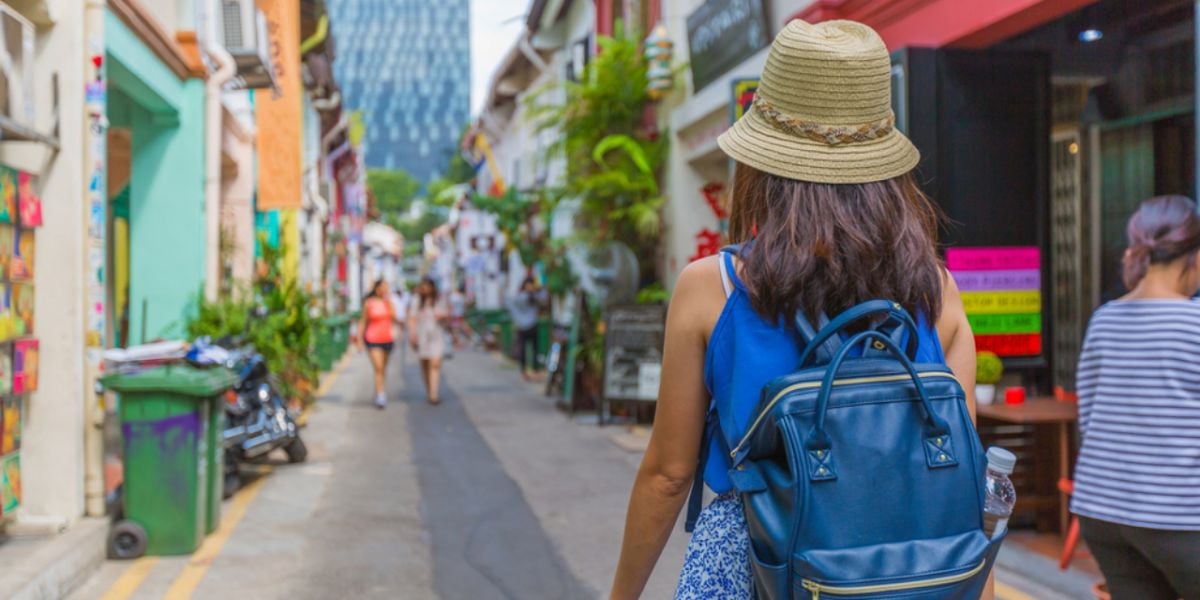
An introduction to Bali
The Island of Bali is located east of Java and west of Lombok and covers 5,780 km². It has a total population of 4.362 million, which includes about 30,000 expatriates. This Indonesian province not only includes the island of Bali itself but is also home to some smaller neighboring islands, namely Nusa Penida, Nusa Lembongan and Nusa Lembongan. They are organized into 9 districts: Kuta, Legian, Seminiak, Nusa Dua, Sanur, Ubud and Jimbaran Bay with Denpasar, as provincial capital. The latter is the second most populous city in eastern Indonesia, with an estimated population of just over one million in 2022, but foreigners tend to settle mainly in Sanur, Ubud, Seminyak, Kerobokan, Seminyak and Canggu. Furthermore, it's worth mentioning that urban development is mainly centered on the southern Bali region of Kabupaten Badung, which is known to be the densest zone on the island.
Kuta
Before the island opened to tourism in the 1970s, the district of Kuta was nothing but a tiny township with muddy rickshaw lanes. However, with the arrival of the first surfers and a constant flow of visitors thereon, the Balinese district has surged into one of the busiest, liveliest, and noisiest places on the island. It is an absolute must for any incoming tourist and is a vibrant location with restaurants and stores. Traffic jams are constant, as is the noise from the many clubs that line the streets.
Since it is a shopping district, many expats tend to flock to Kuta upon arrival, even though the district has the reputation of being a noisy and chaotic place. The main reason behind this is that one can find five-star hotels alongside budget guesthouses, as well as high-end restaurants like Jamie Oliver Kitchen, rubbing shoulders with modest 1-course-menu local establishments (warung), or even an award-winning shopping mall. In short, whatever your budget, the district of Kuta can be a good place to start your Balinese trip before taking the time to better know the island and settling in.
Seminyak
Seminyak is nicknamed "Kuta's poshest sister". As a matter of fact, the area was first established as an extension of Kuta, accommodating those who could not settle there. Although only 15 minutes from Kuta, Seminyak has a more upscale, and therefore more expensive, lifestyle. From lavish hotels to gourmet restaurants, great roads and a wide selection of designer boutiques, Seminyak is definitely a class above.
Many beautiful villas with pools and stunningly maintained gardens are to be found there. However, if you're planning a long-term move to Bali, it can be complicated to buy a new villa in Seminyak due to the overwhelming demand. As for rentals, prices are higher than in other areas, as tourist activity is also high in this area.
In tourist areas, prices also tend to be high too. Therefore, if you are looking for affordable rent and meals, step out of Seminyak!
Additionally, expat families in Bali may find it difficult to pick an international school in the Seminyak area. In that case, try exploring other regions like Canggu, Umalas or Denpasar.
Canggu
Just a decade ago, the city was a humble seaside village surrounded by black sand beaches with less than 10 expatriates. Today, the sleepy village has awakened to become a vibrant residential area. Currently, Canggu seems to be the hottest trend in Bali, to the point, however, that it may sometimes feel too westernized for some people. For that reason, it is nicknamed "Kampala Bule", or foreigners' village, and incidentally, this reflects in the prices, which are slowly closing in on European standards. As such, if you wanted to mix with locals when moving to Bali, Canggu will not be your best option.
Many young expats prefer Canggu for its eco-friendly, multicultural and laid-back atmosphere, in addition to its surf spots, which are among the best on the island. The district is also a place where it is easy to find organic grocery stores, world-class beach clubs, and foreign restaurants.
Thanks to its many coworking spaces, high-speed internet connection and networking opportunities, Canggu is also renowned to attract most digital nomads in Indonesia. Moreover, when it comes to accommodation, there is no shortage of options. They range from modest homestays to luxurious private villas with swimming pools. And if you're looking to be on a budget, consider villa sharing, or those other places that offer accommodation as well as coworking spaces.
Ubud
Ubud is referred to as the capital of yoga. In Bali, it is the preferred destination for those seeking tranquility and closeness to nature. Located in the Gianyar area, Ubud is surrounded by a lush forest where the sacred river Ayung flows peacefully. Although experiencing a massive influx of tourists, Ubud has retained its charm and is generally quieter than its southern counterpart. With many vegan/vegetarian restaurants, yoga studios, and meditation and healing spaces, it is the perfect place for those who want to relax.
Nusa Dua and the Bukit area
Jimbaran, Nusa Dua and the Bukit area extend to Uluwatu, and are more family-oriented areas. These regions have many luxury hotels and resorts, especially in Nusa Dua and the Uluwatu area.
This area features Indonesian-style residential complexes as well as luxurious villas that are generally cheaper than in Canggu and Seminyak. One should expect to pay around 3 million rupiahs (350 USD) for renting a charming house with a small garden, and if you add another 2 million rupiahs, you will be entitled to maid service. In fact, to live comfortably, one should budget at least 7 million rupiahs (4,500 USD) against 12 million (850 USD) for a shared villa in Canggu or Seminyak. Otherwise, because Jimbaran and Bukit are partly westernized and partly local, they have some typical restaurants where you can eat nasi campur (rice-based) for as little as 2 USD per meal.
Along the shoreline of the Bukit area lie some of Bali's most idyllic white sand beaches. Waves are known to attract surfers, and this affects the general vibes, guaranteeing a completely laid-back atmosphere! On the other hand, the roads are empty only from 21 hours.
We do our best to provide accurate and up to date information. However, if you have noticed any inaccuracies in this article, please let us know in the comments section below.








